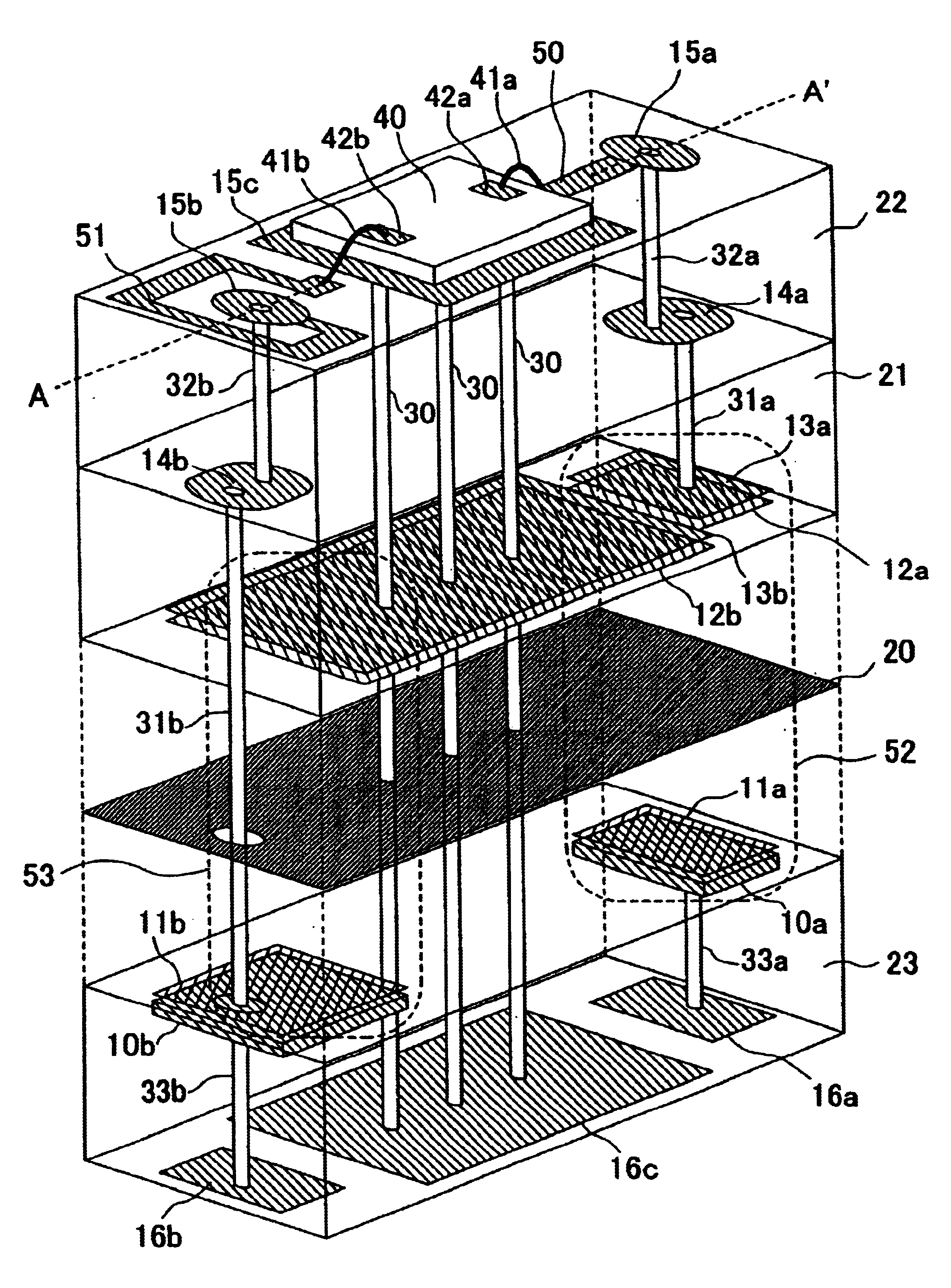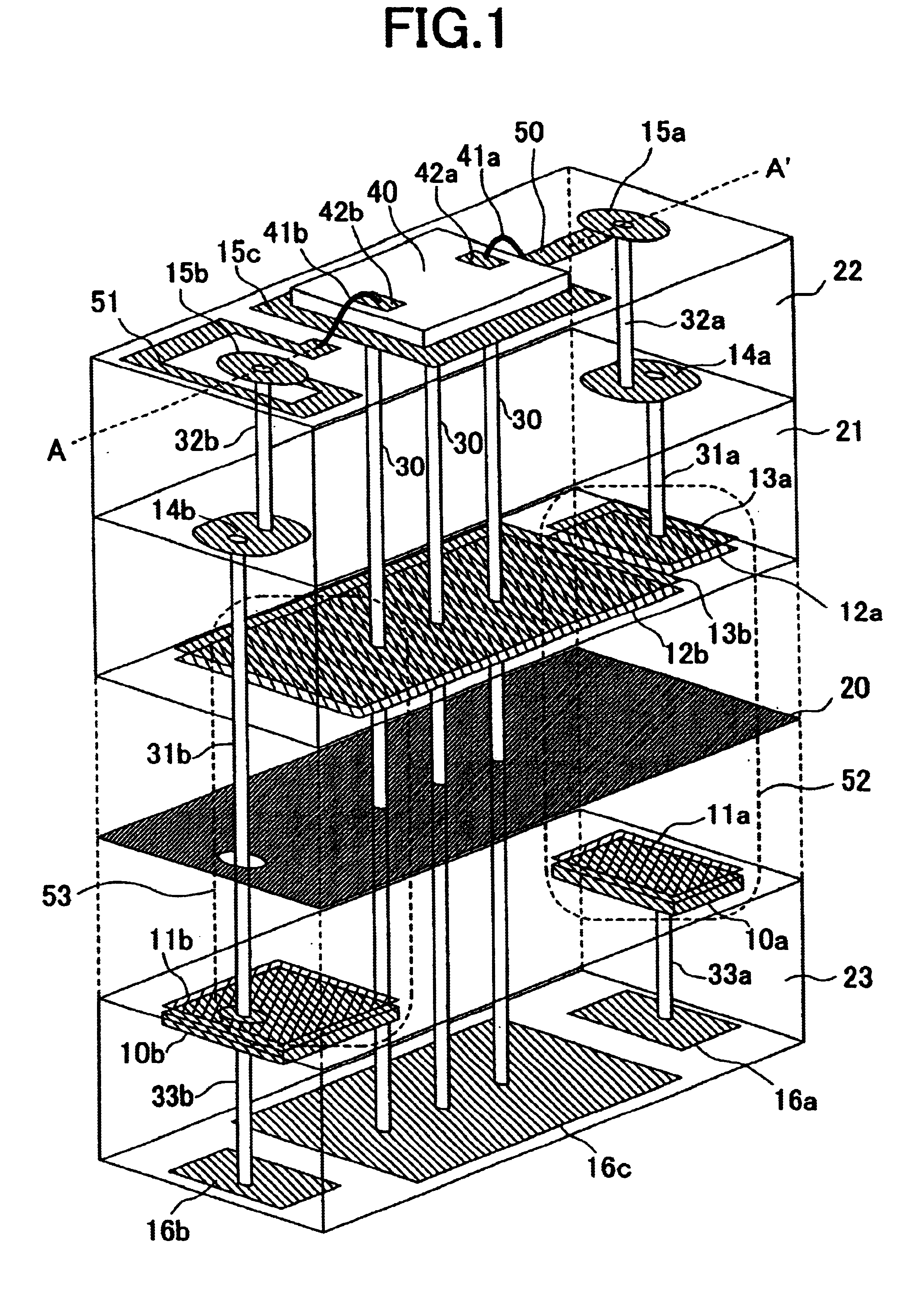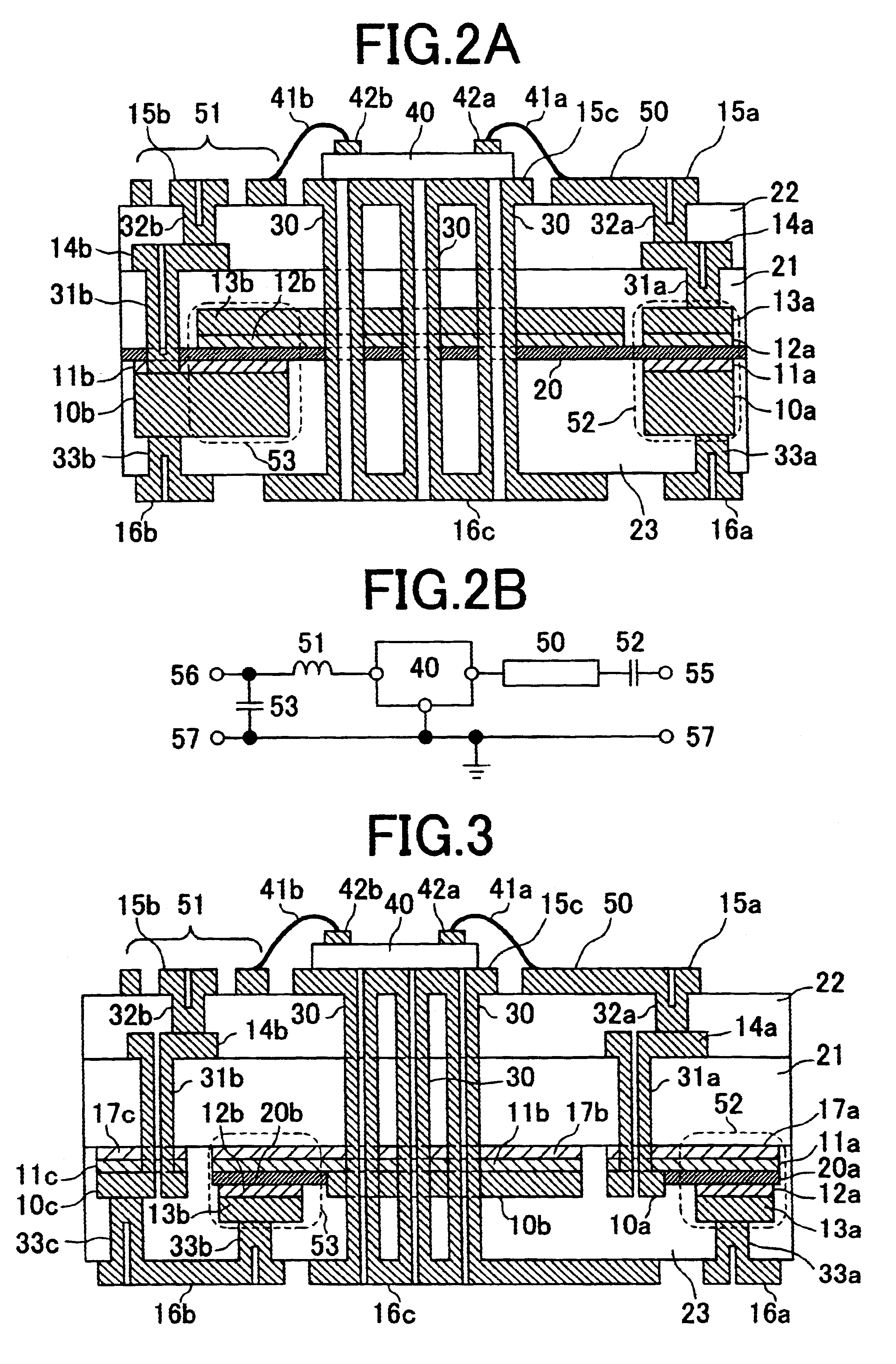Electronic circuit equipment using multilayer circuit board
a multi-layer circuit board and circuit technology, applied in the direction of printed circuit non-printed electric components association, electrical connection formation of printed elements, electrical apparatus construction details, etc., can solve the problems of ceramic, i, and light weight of the board
- Summary
- Abstract
- Description
- Claims
- Application Information
AI Technical Summary
Benefits of technology
Problems solved by technology
Method used
Image
Examples
first embodiment
1. First Embodiment
Using FIG. 1 and FIGS. 2A and 2B, the explanation will be given below concerning the first embodiment of the present invention. FIG. 1 is a perspective view of the electronic circuit equipment using the multilayer circuit board in the first embodiment. FIG. 2A is a cross-sectional view of the electronic circuit equipment cut off along a one-point chain line A--A' in FIG. 1. FIG. 2B is a diagram of the equivalent circuit for the electronic circuit equipment.
A thin film dielectric 20 is sandwiched between a first electrode 11a and a second electrode 13a that overlays the first electrode to each other, thereby forming a thin film capacitor 52. A second connection layer 12a the area of which is equal to that of the second electrode 13a is provided between the second electrode 13a and the thin film dielectric 20. A first wiring conductor 10a the area of which is equal to that of the first electrode 11a is provided on a plane of the first electrode 11a opposite to the t...
second embodiment
2. Second Embodiment
FIG. 3 is a cross-sectional view of the electronic circuit equipment using the multilayer circuit board for explaining a second embodiment of the present invention. The equivalent circuit for the present electronic circuit equipment is the same as the one used in the first embodiment and illustrated in FIG. 2B.
A thin film dielectric 20a is sandwiched between the first electrode 11a and the second electrode 13a, thereby forming the thin film capacitor 52. The second connection layer 12a is provided between the second electrode 13a and the thin film dielectric 20a. The second electrode 13a is connected to the back-surface conductor 16a via the via-hole 33a provided in the dielectric layer 23. A first connection layer 17a is provided on a plane of the first electrode 11a opposite to the thin film dielectric 20a. The first wiring conductor 10a is provided at a portion of the first electrode 11a which is positioned on the thin film dielectric 20a side and does not ove...
PUM
 Login to View More
Login to View More Abstract
Description
Claims
Application Information
 Login to View More
Login to View More - R&D
- Intellectual Property
- Life Sciences
- Materials
- Tech Scout
- Unparalleled Data Quality
- Higher Quality Content
- 60% Fewer Hallucinations
Browse by: Latest US Patents, China's latest patents, Technical Efficacy Thesaurus, Application Domain, Technology Topic, Popular Technical Reports.
© 2025 PatSnap. All rights reserved.Legal|Privacy policy|Modern Slavery Act Transparency Statement|Sitemap|About US| Contact US: help@patsnap.com



